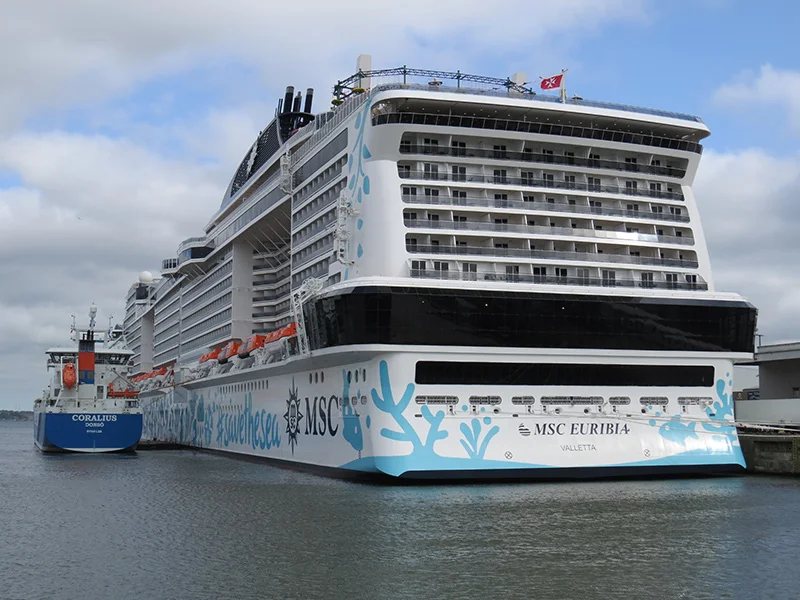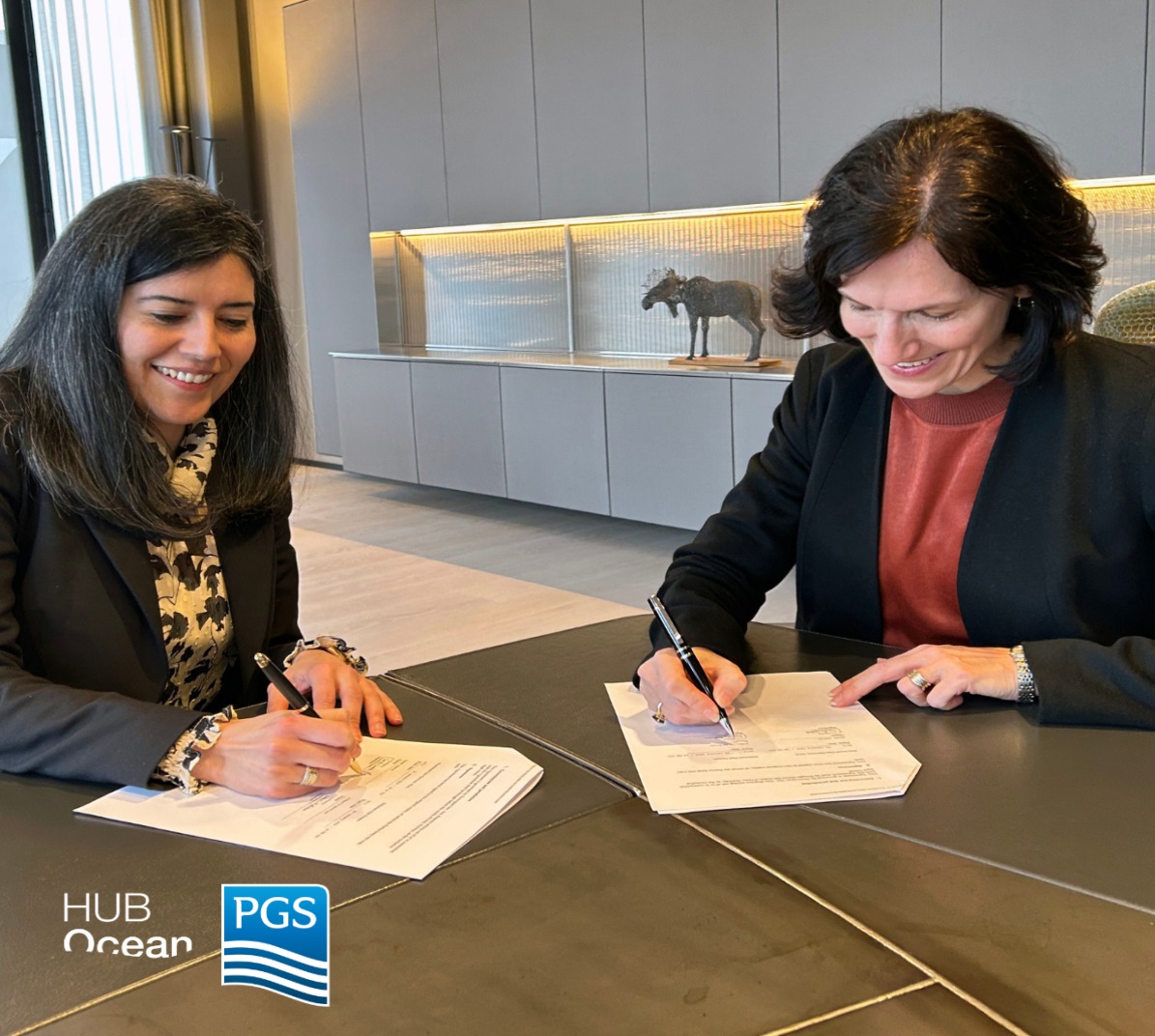The Cruise Division Of MSC Group and Gasum Partner for LNG and Renewable E-LNG to Achieve 2050 Net Zero Greenhouse Gas Emissions Goal

Geneva, Switzerland – The Cruise Division of MSC Group and Gasum have signed a long-term agreement for the supply of liquefied natural gas (LNG) for MSC Cruises’ new flagship, MSC Euribia, as well as a Letter of Intent (LOI) covering cooperation on the supply of synthetic e-LNG made with renewable energy. This supports the Cruise Division’s strategy to achieve net zero greenhouse gas emissions from its marine operations by 2050.
MSC Cruises, the world’s third-largest cruise operator, and Nordic energy company Gasum executed the LOI with the goal of securing MSC access to liquefied synthetic gas, or e-LNG, which is produced using hydrogen created by hydrolysis with renewable energy and captured CO2. Together, Gasum and MSC Cruises are creating an actionable roadmap for cutting emissions in MSC’s cruise operations using sizeable volumes of several thousand tons of e-LNG starting in 2026.
The companies’ long-term agreement on the delivery of LNG to MSC’s new flagship MSC Euribia will see Gasum supporting MSC Cruises in cutting emissions with the immediate use of LNG.
Using LNG removes nearly all sulfur oxide and particle emissions, greatly reduces nitrogen oxide emissions and significantly lowers greenhouse gas emissions. In addition, LNG technology on board enables MSC Cruises to switch at any time to fully renewable liquefied biogas (bio-LNG) or synthetic gas (e-LNG), in order to reach greenhouse gas emissions reductions of up to 100 percent.
MSC Euribia recently demonstrated that emissions-neutral cruising is already possible by sailing the first ever net zero greenhouse gas emissions voyage thanks to the emissions reductions allowed by liquefied biogas procured by Gasum. The ship sailed for four days from Saint-Nazaire, France to Copenhagen, Denmark and utilized bio-LNG with a mass-balance approach, the most environmentally efficient method of delivering the benefits of renewable biogas. MSC Cruises purchased over 400 tons of bio-LNG from Gasum to show its commitment to the deployment of drop-in renewable fuels and energy transition measures toward the pioneering voyage. MSC Cruises is the industry’s first deep sea ocean cruise operator to buy bio-LNG and achieve significant lifecycle emissions reductions as a result.
Linden Coppell, Vice President of Sustainability and ESG for MSC Cruises, said: “We are delighted to be partnering with Gasum on our journey to net zero greenhouse gas emissions. Securing a reliable supply of LNG and e-LNG is of critical importance to our decarbonization efforts, and the LOI and long-term agreement that we have announced today are significant steps on that journey. Partnering with Gasum will enable us to access new and cleaner fuels needed to make net zero cruising a reality. We need more suppliers like Gasum to step up and support our industry with its environmental targets. We are ready and waiting to buy more of these new fuels.”
Mika Wiljanen, CEO of Gasum, stated: “As an alternative fuel supplier dedicated to the energy transition, Gasum is proud to offer support to MSC Cruises, a major maritime player, in their quest to improve the environmental footprint of their operations. At the same time, MSC Cruises is supporting the development of the most promising alternative fuel by proving a demand for it. This LOI on e-LNG is a landmark agreement for the shipping industry as it demonstrates that e-LNG will be available to the maritime transport sector within a short timeframe. We are also very happy about the long-term LNG supply agreement which we believe is the start of long-lasting cooperation.”
What is e-LNG or synthetic gas
E-LNG gas can be produced synthetically through the Power-to-Gas process. First, hydrogen is produced from water using renewable electricity sourced from wind, solar or other options. The hydrogen can then be further processed into methane by adding non-fossil carbon dioxide obtained from carbon capture.
This resulting synthetic renewable methane gas is fully interchangeable with natural gas and biogas. When it is liquefied it is likewise fully interchangeable with LNG and liquified biogas, meaning it can be transported through existing infrastructure – trucks, ships, pipelines – and use existing gas grids.
Synthetic gas can be fed directly at any ratio into dual fuel engines installed on existing ships, which currently run on natural gas, biogas, LNG or liquefied biogas. There is no need for any additional investments in new equipment or modifications.
Unlike alternative fuels such as ammonia or methanol which are still in the development stage both in terms of production and infrastructure, synthetic gas, or e-LNG, is a concrete pathway to decarbonizing maritime and land transportation in the next few years.
Gasum’s strategic goal is to bring seven terawatt hours (7 TWh) of renewable gas to market each year by 2027. Achieving this goal would mean a cumulative annual carbon dioxide reduction of 1.8 million tons for Gasum’s customers.

